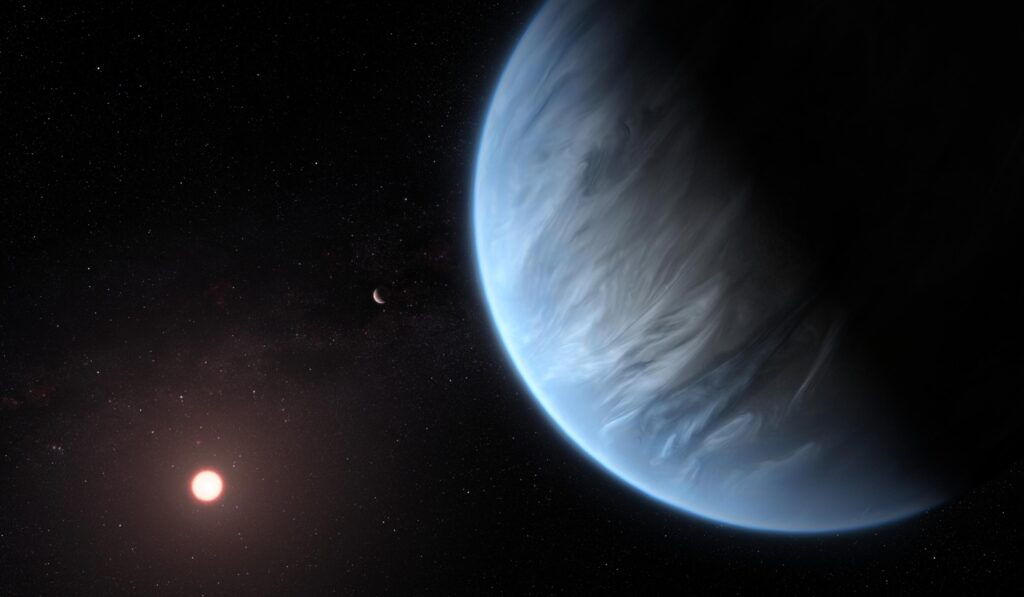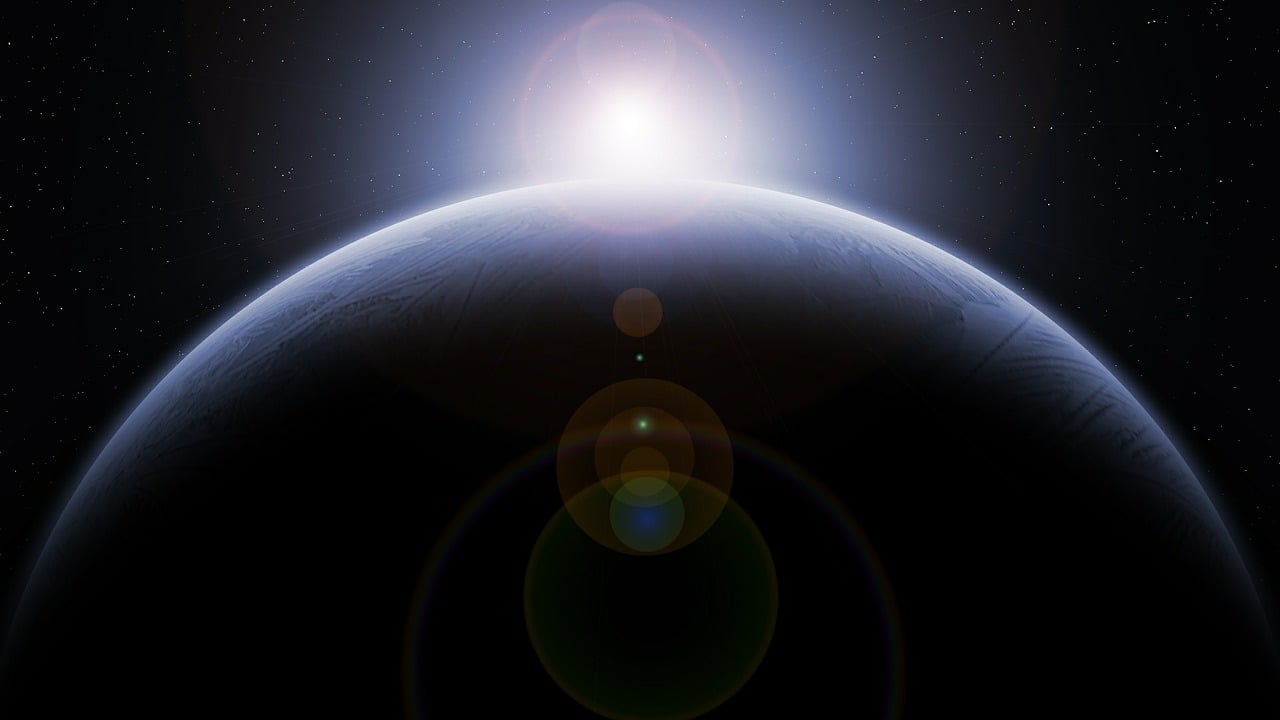Image by LoganArt from Pixabay
A Cosmic Conundrum: Life or Ethane?
The James Webb Space Telescope (JWST) has been at the forefront of astronomical discoveries, recently detecting intriguing chemical signatures in the atmosphere of exoplanet K2-18b. Initial interpretations suggested the presence of dimethyl sulfide (DMS), a compound on Earth associated with biological activity, sparking excitement about potential alien life.
Reassessing the Evidence
However, scientists from the University of Chicago urge caution. Their analysis indicates that the spectral data attributed to DMS could also be explained by ethane, a hydrocarbon not linked to biological processes. This revelation underscores the complexities of interpreting atmospheric data from distant worlds.

This artist’s impression shows what the faraway planet K2-18b, its host star and an accompanying planet in this system might look like. A new University of Chicago analysis has cast doubt on an earlier finding that concluded data showed evidence for life on the planet. Credit: ESA/Hubble, M. Kornmesser
The Role of Ethane in Planetary Atmospheres
Ethane is a simple hydrocarbon commonly found in the atmospheres of gas giants and is produced through abiotic processes. Its potential presence on K2-18b suggests that the planet’s atmospheric chemistry might be more complex than initially thought, and not necessarily indicative of life.
The Importance of Scientific Scrutiny
This development highlights the iterative nature of scientific discovery. While the initial findings were promising, the reevaluation emphasizes the need for multiple observations and analyses before drawing conclusions about extraterrestrial life. Dailyscitech
Looking Ahead
Future observations by JWST and other instruments will aim to clarify the composition of K2-18b’s atmosphere. By distinguishing between biosignatures and abiotic compounds like ethane, scientists hope to better understand the planet’s potential to harbor life. Dailyscitech
Reference: “Insufficient evidence for DMS and DMDS in the atmosphere of K2-18 b. From a joint analysis of JWST NIRISS, NIRSpec, and MIRI observations” by R. Luque, C. Piaulet-Ghorayeb, M. Radica, Q. Xue, M. Zhang, J. L. Bean, D. Samra, M. E. Steinrueck, Submitted, Astronomy & Astrophysics Letters.
arXiv:2505.13407
Curiosity Continues
As we refine our methods and interpretations, the quest to answer the age-old question—are we alone?—continues. What other secrets might the cosmos reveal as our tools and understanding evolve? Dailyscitech










